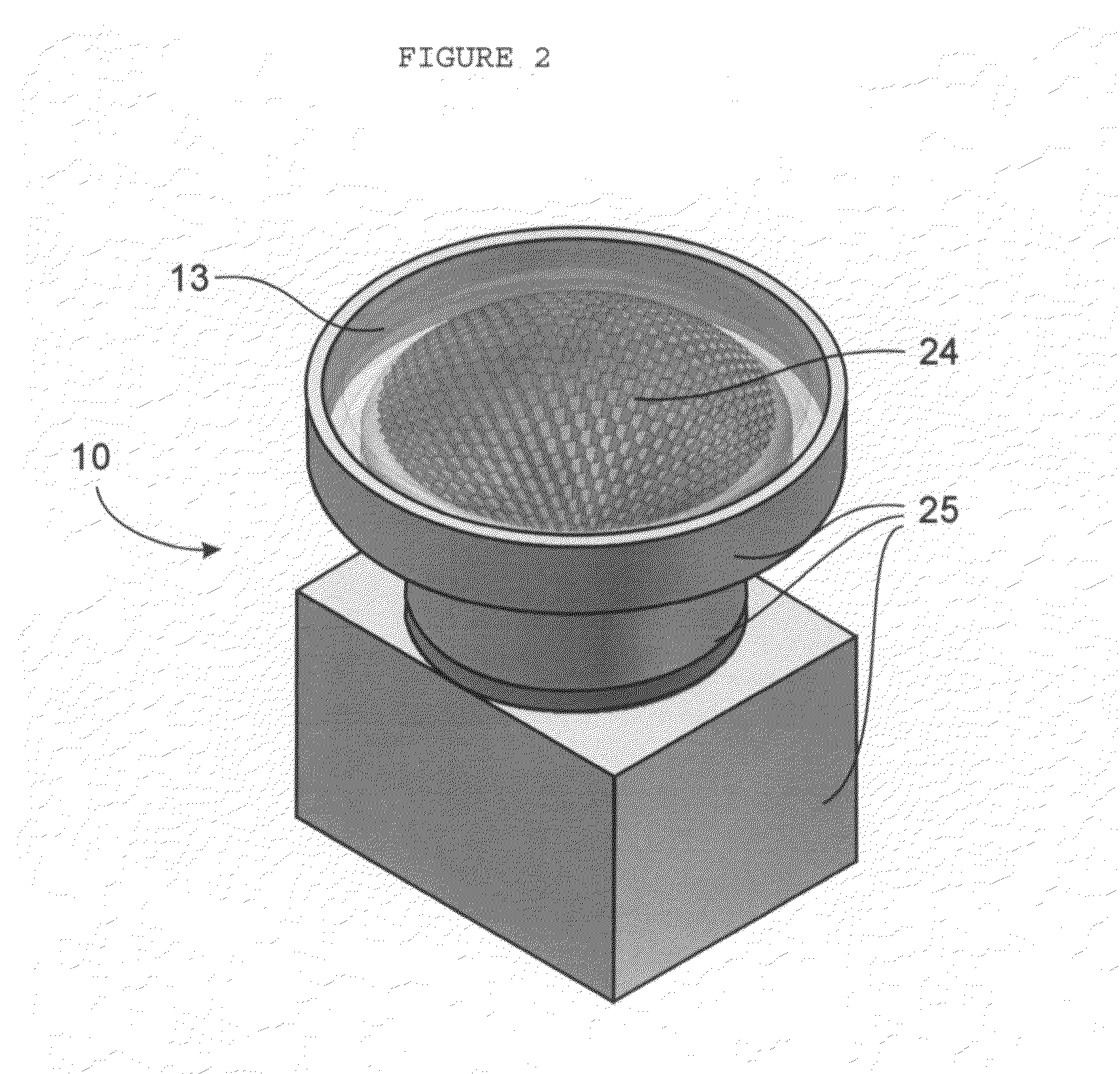Fiber coupled artificial compound eye
a compound eye and fiber technology, applied in the field of wide angle imaging systems, can solve the problems of large size, limited field of view, long lens life, etc., and achieve the effect of reducing optical aberration and sharpening the imag
- Summary
- Abstract
- Description
- Claims
- Application Information
AI Technical Summary
Benefits of technology
Problems solved by technology
Method used
Image
Examples
Embodiment Construction
[0040]Referring now to the drawings, FIG. 1 is a cross-sectional view of a superposition array imaging system 10, the preferred embodiment of the fiber coupled artificial compound eye invention. It includes a spatial filter array 16, a lenslet array 13, a louver baffle 24, a fiber optic imaging taper 14, and a mosaic detector array with readout electronics 18, all held rigidly in alignment by a mounting structure 25. The lenslet array 13 is shaped into a positive meniscus form consisting of an outer convex lenslet array 11 and an inner concave lenslet array 12. The spatial filter array 16 is made conformal to the convex lenslet array 11 and the louver baffle 24 is made conformal to the concave lenslet array 12. Between the louver baffle 24 and the fiber optic imaging taper 14 is a clear zone 26 in which can be placed a positive mensicus photo grey glass for controlling light intensity. The photogrey glass and the top of the fiber optic imaging taper 14 must be shaped to conform to t...
PUM
 Login to View More
Login to View More Abstract
Description
Claims
Application Information
 Login to View More
Login to View More - R&D
- Intellectual Property
- Life Sciences
- Materials
- Tech Scout
- Unparalleled Data Quality
- Higher Quality Content
- 60% Fewer Hallucinations
Browse by: Latest US Patents, China's latest patents, Technical Efficacy Thesaurus, Application Domain, Technology Topic, Popular Technical Reports.
© 2025 PatSnap. All rights reserved.Legal|Privacy policy|Modern Slavery Act Transparency Statement|Sitemap|About US| Contact US: help@patsnap.com



